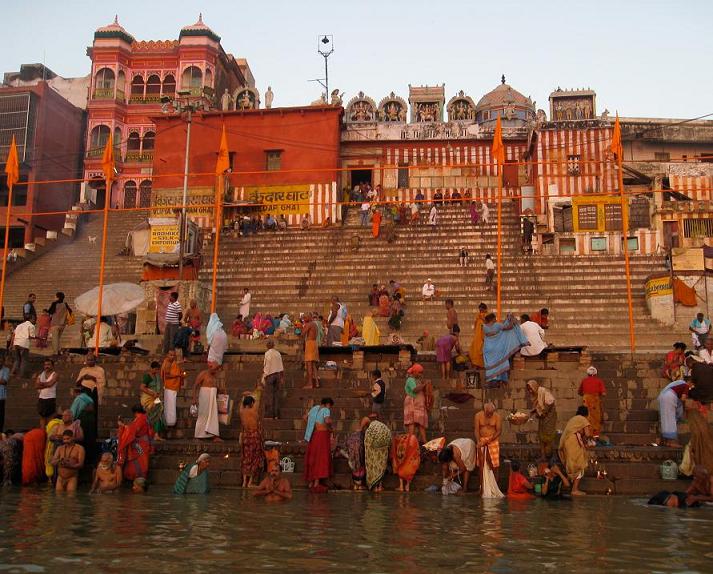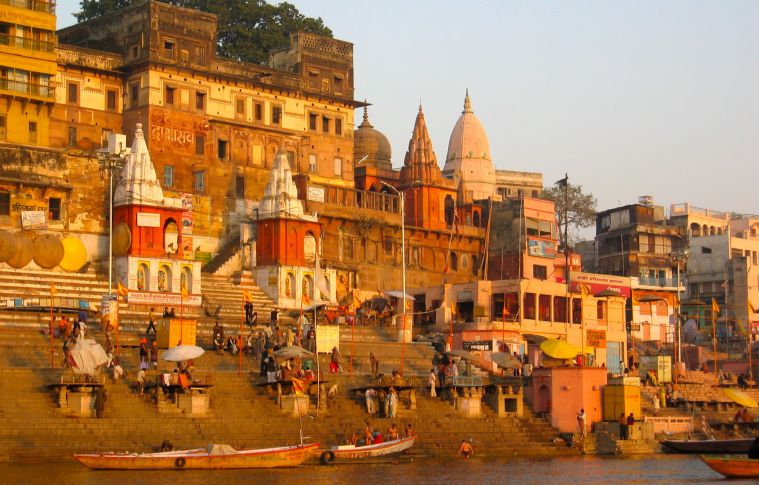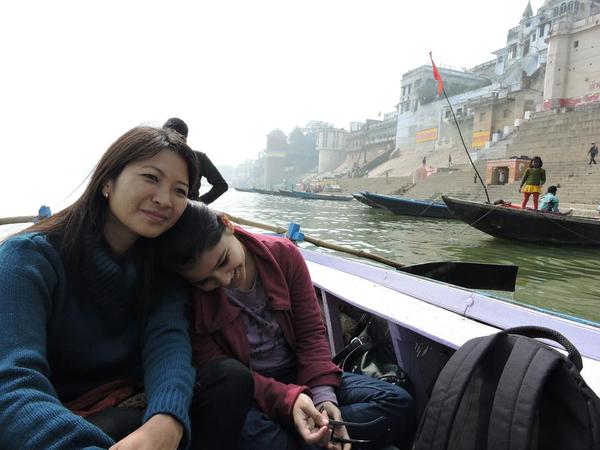Ghats - Varanasi
|
 |
|
The Ghats are the wide stone steps that leads down to the river for almost 5 km along the west bank of the River Ganges in
Varanasi. Thousands of pilgrims and devotees visit these Ghats to meditate and purify themselves by taking a bath in the holy river Ganges. Behind the Ghats rise the magnificent superstructure of temples,
havelis, domes and minarets of mosques.
Viewing the ghats early in the morning from a boat on the river can be an unforgettable experience. |
|
In the early morning the mist clears, the light is brighter and the ghats reverberate with the chant of mantras, the sound of bells and the cries of the vendors. An aroma of incense sticks, oil lamps and flowers fills the air. At dusk too the ghats are magical, as hundreds of little lamps float out on the river as offerings.
|
|
 |
|
Varanasi has about 100
ghats. Many are bathing ghats but at the others, cremations are conducted. Many of these ghats were built when the Marathas controlled the city and the
Scindias, the Peshwas, Holkars and Bhonsles stand out as patrons of
Varanasi. Even today many of the ghats are privately owned. The Shivala or Kali Ghat is still owned by the former Maharaja of
Varanasi. The main bathing ghats are Assi,
Dasaswamedh, Barnasangam, Panchaganga and
Manikarnika. To bath at these five ghats in this order in a day is known as the Panch Tirtha
Yatra.
|
|
Various legends are associated with the
ghats. It is believed that at Dasaswamedh Ghat Lord Brahma sacrificed 10 horses in a
yagya. At the Manikarnika Ghat Lord Vishnu is said to have dug a pit with his chakra and while performing various penances filled it with his perspiration. As Lord Shiva watched him, his earring
(manik) fell into the pit - giving the ghat the name of
Manikarnika. This ghat is associated with Goddess
Parvati. The five rivers are supposed to meet at the
PanchGanga Ghat. Lord Vishnu's footprints are said
to be preserved at Chakrapushkarini. Another
interesting Ghat to visit is the Man Mandir Ghat.
This Ghat was built in the year 1770 by Sawai Jai
Singh of Jaipur. The Mansarover Ghat was also built
by Man Singh of Amber. The Bachraj Ghat is used by
Jain devotees for it has three river bank Jain
temples. Manikarnika and Harishchandra ghats are
used mainly for the cremation of the dead.
|
|
 |
|
Other
important ghats include the Hanuman Ghat with the
Hanuman temples and Kanchi Kam Kotishwara. The Tulsi
Ghat is dedicated to great saint Tulsi Das who wrote
the 'Ram Charit Manas', the Hindi translation of the
Ramayana. The Lalita Ghat has a beautiful temple
built in carved wood by the late King of Nepal (which
is also known as the Nepalese Temple). |
|
|
|
|
|